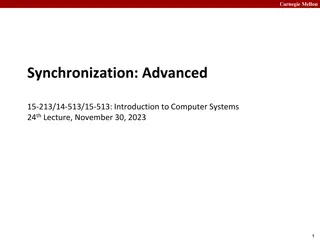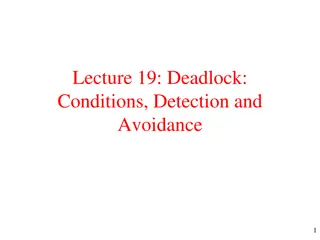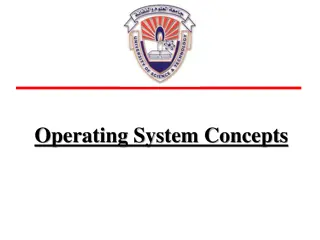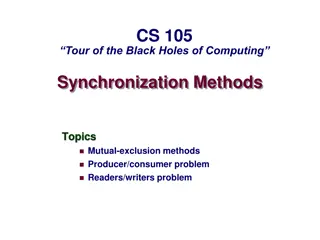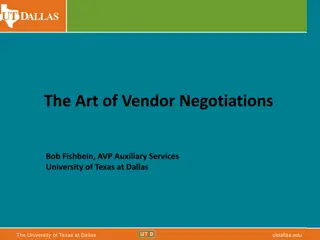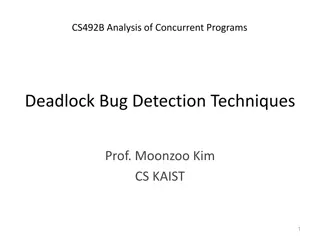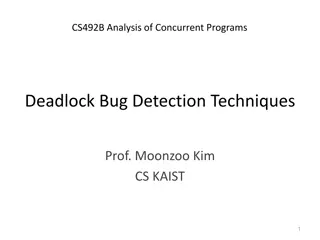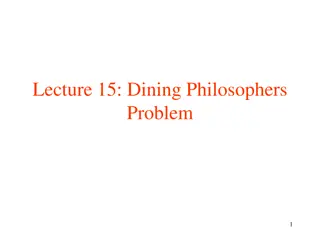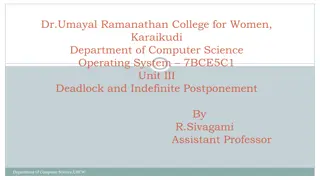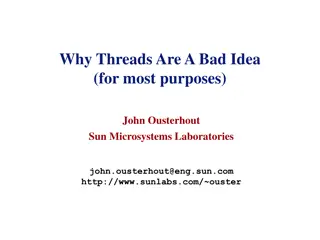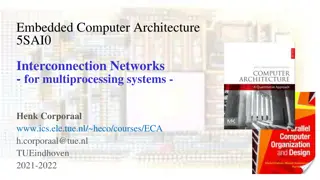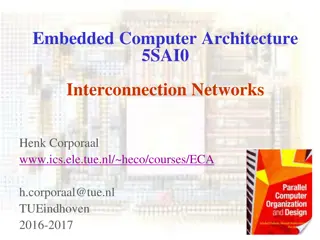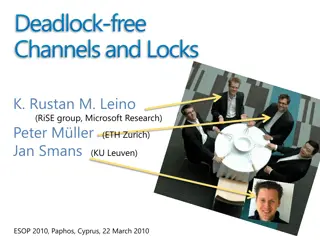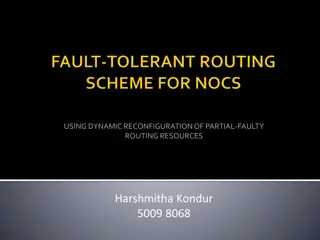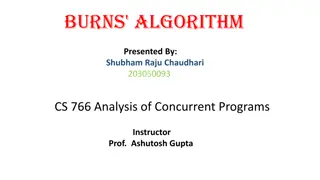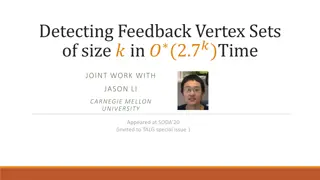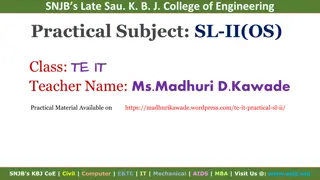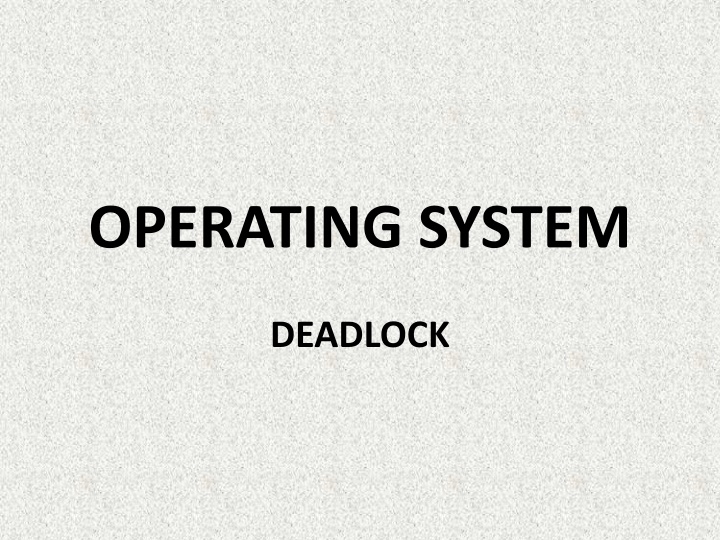
Understanding Operating System Deadlock and Prevention
Explore the concept of deadlock in operating systems, where processes compete for resources, leading to a standstill. Learn about the causes of deadlock and prevention strategies such as mutual exclusion, hold and wait, no preemption, and avoiding circular wait scenarios.
Download Presentation

Please find below an Image/Link to download the presentation.
The content on the website is provided AS IS for your information and personal use only. It may not be sold, licensed, or shared on other websites without obtaining consent from the author. If you encounter any issues during the download, it is possible that the publisher has removed the file from their server.
You are allowed to download the files provided on this website for personal or commercial use, subject to the condition that they are used lawfully. All files are the property of their respective owners.
The content on the website is provided AS IS for your information and personal use only. It may not be sold, licensed, or shared on other websites without obtaining consent from the author.
E N D
Presentation Transcript
OPERATING SYSTEM DEADLOCK
DEFINITION OF DEADLOCK A deadlock happens in operating system when two or more processes need some resource to complete their execution that is held by the other process.
EXPLANATION OF DIAGRAM In the above diagram, the process 1 has resource 1 and needs to acquire resource 2. Similarly process 2 has resource 2 and needs to acquire resource 1. Process 1 and process 2 are in deadlock as each of them needs the other s resource to complete their execution but neither of them is willing to relinquish their resources
Mutual Exclusion There should be a resource that can only be held by one process at a time. In the diagram below, there is a single instance of Resource 1 and it is held by Process 1 only.
Hold and Wait A process can hold multiple resources and still request more resources from other processes which are holding them. In the diagram given below, Process 2 holds Resource 2 and Resource 3 and is requesting the Resource 1 which is held by Process 1.
No Preemption A resource cannot be preempted from a process by force. A process can only release a resource voluntarily. In the diagram below, Process 2 cannot preempt Resource 1 from Process 1. It will only be released when Process 1 relinquishes it voluntarily after its execution is complete.
Circular Wait A process is waiting for the resource held by the second process, which is waiting for the resource held by the third process and so on, till the last process is waiting for a resource held by the first process. This forms a circular chain. For example: Process 1 is allocated Resource2 and it is requesting Resource 1. Similarly, Process 2 is allocated Resource 1 and it is requesting Resource 2. This forms a circular wait loop.

